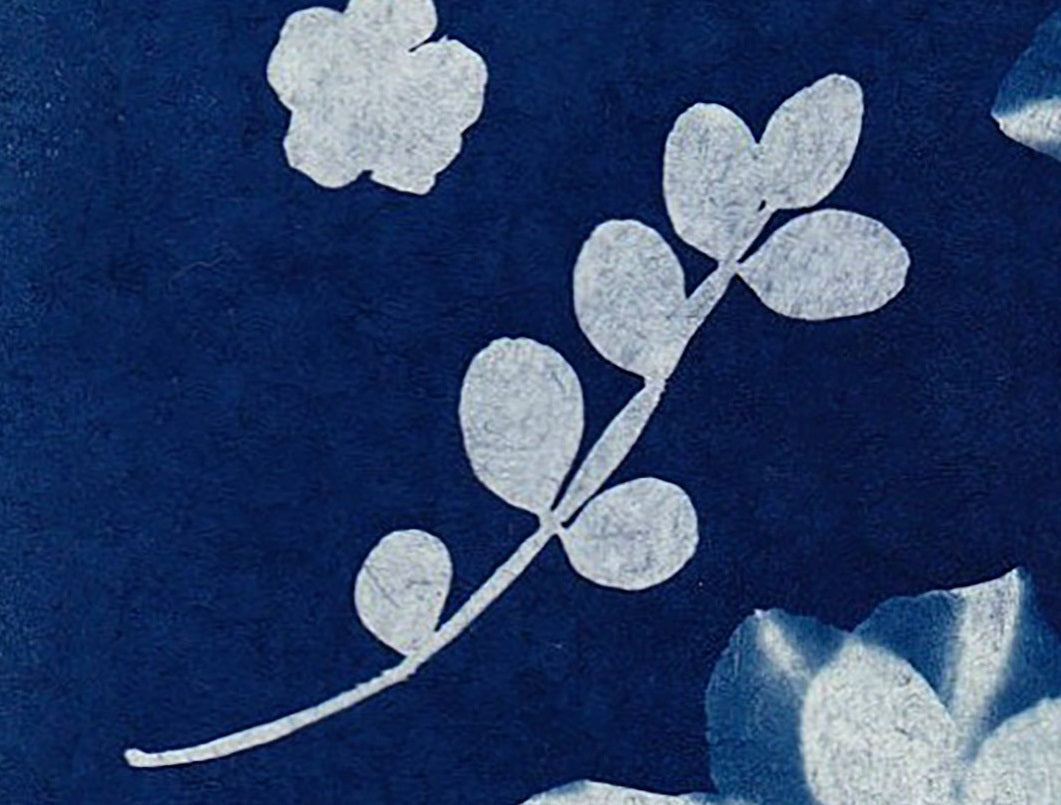Cyanotype is a photographic printing process that produces a cyan-blue print. The process involves coating a surface, such as paper or fabric, with a light-sensitive solution containing iron salts, which are then exposed to ultraviolet light to create an image.
The history of cyanotype
The history of cyanotype dates back to the early 19th century when it was invented by Sir John Herschel, an English astronomer, in 1842. Herschel was looking for a way to make permanent copies of his notes and drawings, and he discovered that iron salts would react to light and create an image when exposed to sunlight. He called the process "photography" and his discovery paved the way for the development of modern photography.
However, it was Anna Atkins, a British botanist, who popularized the cyanotype process as a means of scientific documentation. She used cyanotype to create a book of photographic images of ferns and other botanical specimens, which was published in 1843-1853. Atkins' work was the first book ever to be illustrated using photographs and it demonstrated the potential of photography as a tool for scientific research and illustration.
In the years that followed, cyanotype became popular as a method of creating blueprints for architectural and engineering drawings, and it was also used for copying documents and making maps. In the 20th century, artists began to experiment with the cyanotype process as a medium for creating fine art prints, and it remains a popular technique among photographers and artists today.
Overall, cyanotype has a rich history and has been used in a variety of ways over the years, from scientific research to fine art. Its unique blue color and simple process make it a popular choice for photographers and artists who are looking for a distinctive and creative approach to image-making.
Cyanotype DIY Idea
Process of the production of the leaf image cyanotype
Materials:
Cyanotype chemicals (sensitizer solution of ammonium iron (III) citrate and potassium ferricyanide)
Water
Cyanotype KIT
White paper or fabric
Brush or foam roller
Glass or plexiglass
Leaf or other object for creating a negative image
Sunlight or UV light source
Water for washing and rinsing
Steps:
1. Mix equal parts of the two cyanotype chemicals, ammonium iron (III) citrate and potassium ferricyanide, to create the sensitizer solution.
2. Using a brush or foam roller, apply the sensitizer solution to a piece of white paper or fabric. Be sure to apply the solution evenly and cover the entire surface. Let the paper or fabric dry in a dark place, away from light.
3. Place the leaf or other object you want to use to create a negative image onto the dried, sensitized paper or fabric. You can arrange the object any way you like to create your desired composition.
4. Cover the paper or fabric and object with a piece of glass or plexiglass to hold the object in place and prevent it from moving during exposure.
5. Place the covered paper or fabric and object in direct sunlight or under a UV light source. The exposure time will vary depending on the strength of the light source and the density of the negative image you want to create. You can experiment with different exposure times to achieve the desired effect.
6. After the exposure time has elapsed, remove the glass or plexiglass and the leaf or other object from the paper or fabric.
7. Rinse the paper or fabric in running water for several minutes to wash away any unexposed sensitizer solution.
8. Once the water runs clear, you can remove the paper or fabric from the water and hang it up to dry.
9. Once the print is dry, you can enjoy your unique and beautiful cyanotype print of a leaf or other object!
Overall, the process of creating a cyanotype print of a leaf is relatively simple and straightforward, but it requires some patience and experimentation to achieve the desired result. With some practice, you can create stunning cyanotype prints of a wide range of objects, using this fascinating and versatile photographic process.
